Conversation at Mayten’s Projects

As I walked through Conversation at Mayten’s Projects, the wisdom of looking at multiculturalism through the lens of conversation struck me repeatedly. As I commuted home, the notion settled nicely in my skull. Curator Farnoosh Talaee says it well, “I realized that on a fundamental level, multiculturalism in Toronto and Canada as a whole means segmentation…Without cultural intersection and the ensuing cross-cultural conversations, is there really diversity?”
Review done by Artoronto Magazine
As I walked through Conversation at Mayten’s Projects, the wisdom of looking at multiculturalism through the lens of conversation struck me repeatedly. As I commuted home, the notion settled nicely in my skull. Curator Farnoosh Talaee says it well, “I realized that on a fundamental level, multiculturalism in Toronto and Canada as a whole means segmentation…Without cultural intersection and the ensuing cross-cultural conversations, is there really diversity?”
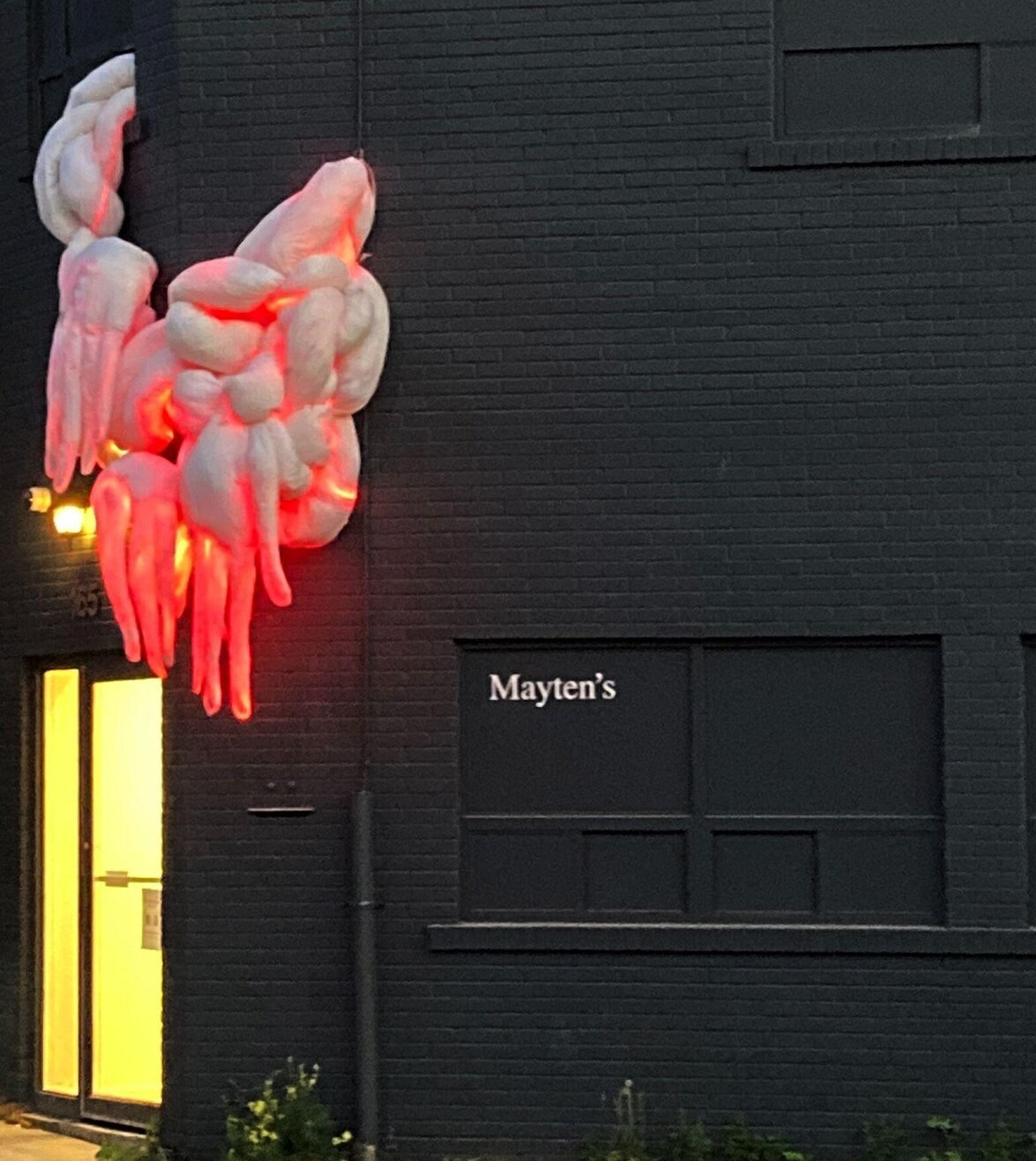
External view of Mayten’s Projects. Lauren Pirie, Dawn 4, 2021, Hand-dyed fabric stuffing and high-quality LED
Conversation is a group exhibition composed of a series of partnerships. Artists of various backgrounds, genders, and ideologies come together to forge connections that are new, old, emotionally intimate, physically distant, and everything in between.
It is particularly satisfying to note how Talaee and the artists embody conversation in all aspects of the exhibition. Conversation is subject, medium, and message. It threads the gallery space together and weaves a single message, like a tapestry made of many threads; each thread having a self-possessed colour and texture but meaning more when woven next to many others.
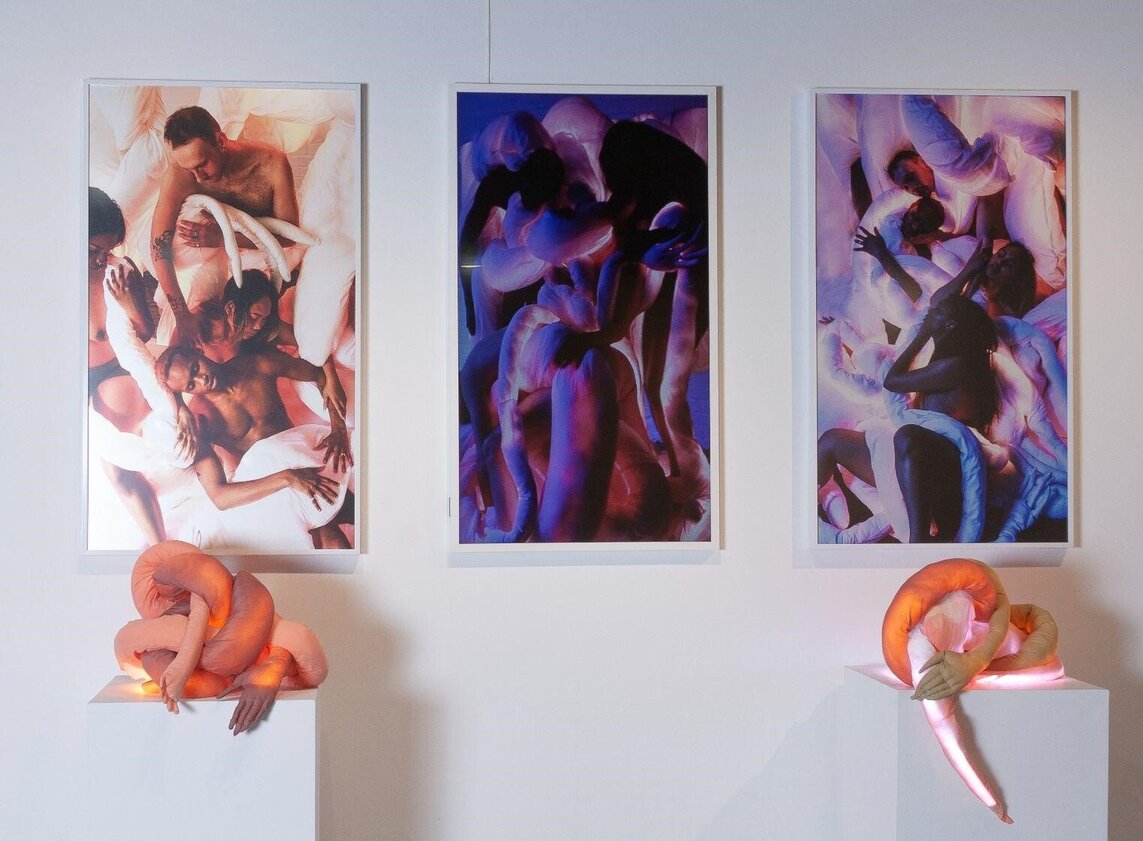
Installation view of Conversation at Mayten’s Projects, Jah Grey and Lauren Pirie, 2021
Portals to our Liberated Futures is well-placed by the gallery doors, echoing the physical entrance as a philosophical entrance into the space. A collaboration between artists Eva Birhanu and Khadijah Morley, this collection of works is the product of a call-and-response conversation from opposite ends of the country, both artists having a hand in all works.
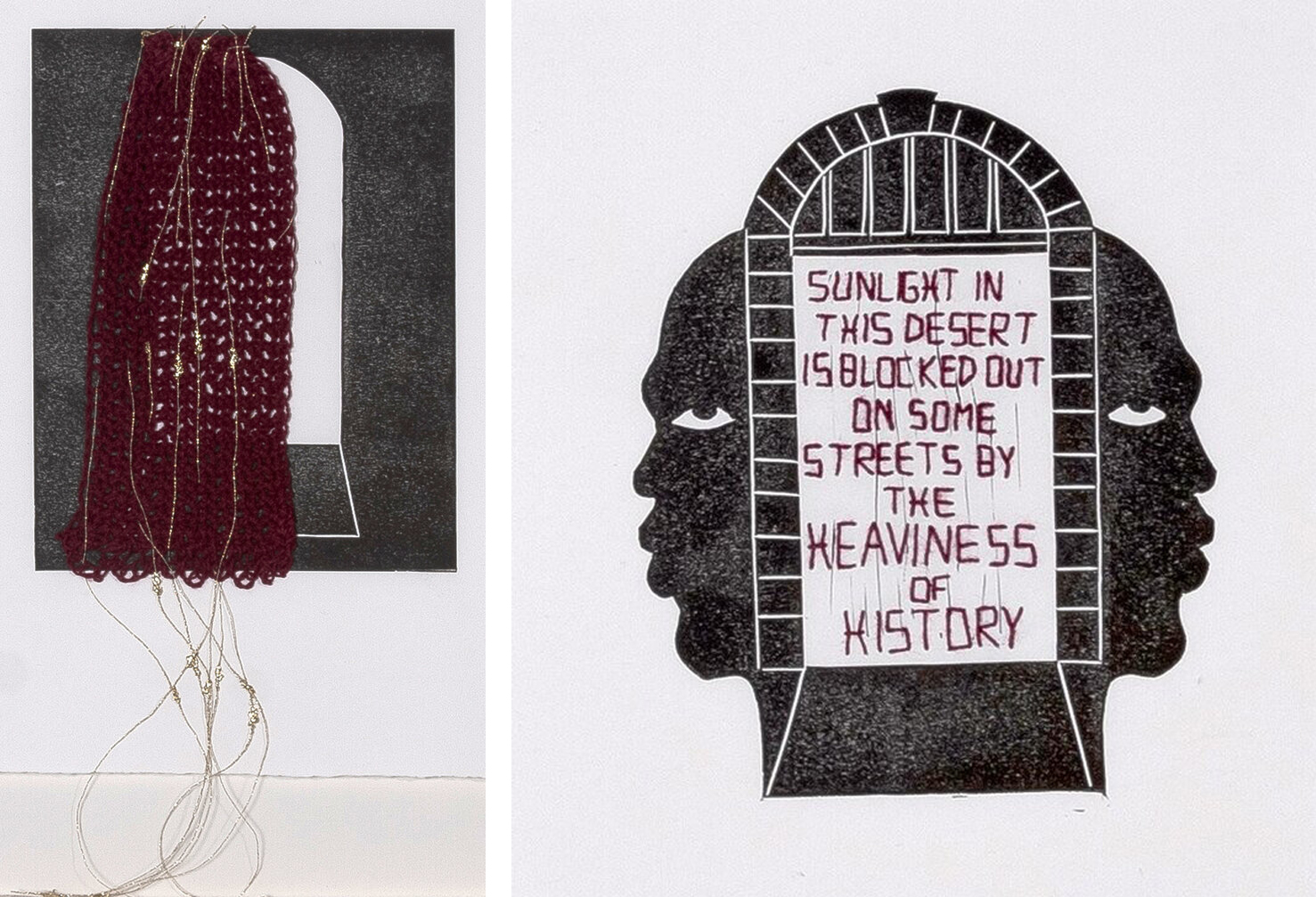
Eva Birhanu and Khadijah Morley, Portals to Our Liberated Futures, 2021, Kozuke Paper, ink, gold thread, 8.5″ x 11” (left) & Portals to Our Liberated Futures, 2021, Strathmore 300 lightweight paper, ink, red thread, 9″ x 12” (right)
In pieces composed of print and textile, Birhanu and Morley explore their shared experiences and complex identities as Black Canadians. “Liberation before Repatriation,” the idea of dismantling Western colonial oppressions before returning to the origins of one’s ancestors, is given weight in a long black, red, and gold hand-woven textile piece; the weight of the message emphasized by the labour of creation. In Portals to our Liberated Futures, doorways appear over and over again, connecting us to conversations across time and space.
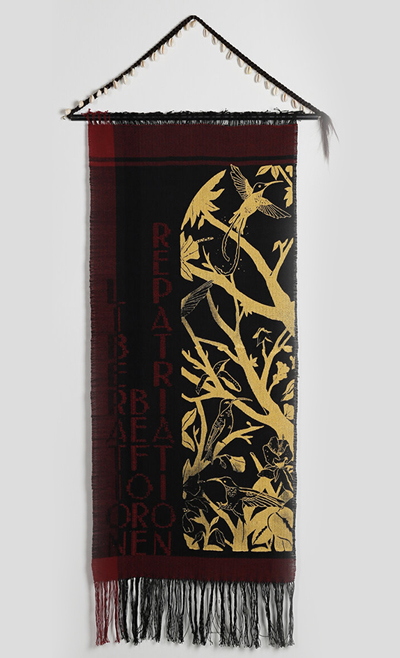
Eva Birhanu and Khadijah Morley, Portals to Our Liberated Futures, 2021, handwoven cotton, gold ink, hair, cowrie shells, 25″ x 61”
In a series of portraits, artists Barirouche Feddal and Preston Pavlis examine self-conversation and isolation. This collection is another call-and-response but these artists worked separately, yet still in response to each other.
Pavlis and Feddal, show their tonal distinctions as well as their similarities. Both create with thick, emotional strokes and use the motif of cigarettes as “tools of conversation.” But Pavlis’ portraits manifest in heavier ways—intimate portraits on full, dark backgrounds make for a thick, weighty permanence—and Feddal’s are lighter—empty canvas and distanced subjects make for a wispy, ephemeral feeling.
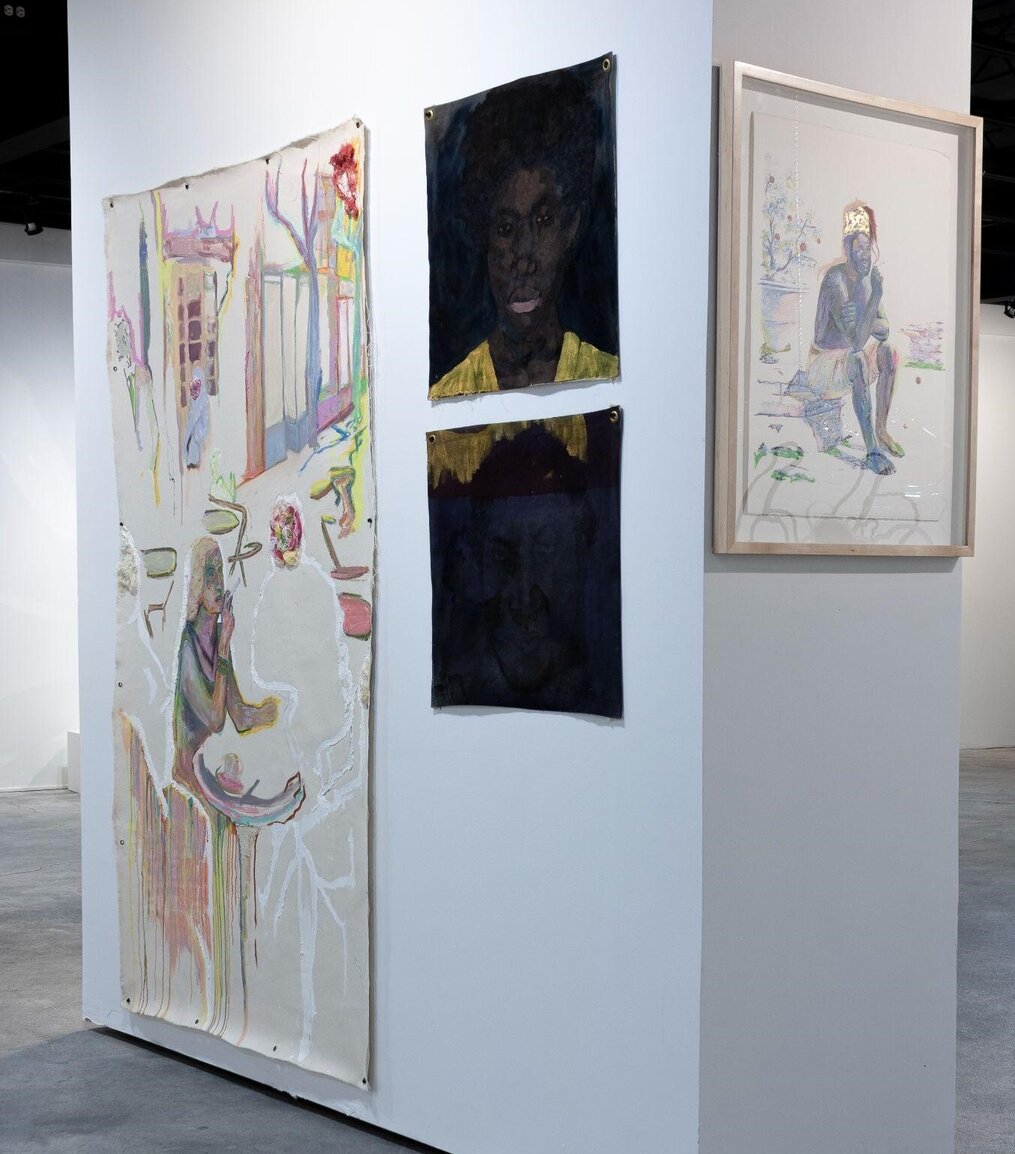
Installation view of Conversation at Mayten’s Projects, Preston Pavlis and Berirouche Feddal, 2021
The criminal artist No.3 by Berirouche Feddal, is a stand-out piece in Conversation. At some distance, a man sits on a kind of stone ledge, wearing a gold hat, smoking a cigarette, and staring out at the viewer. Colourful paint strokes, in this work and others, nod to Fauvism and hints of Orientalism sneak through in the posture and clothing of the figure. As a piece of the larger collaboration, together these portraits can read like a conversation between Pavlis’ created present and Feddal’s created past, each character sharing stories that are as dissimilar as they are alike.
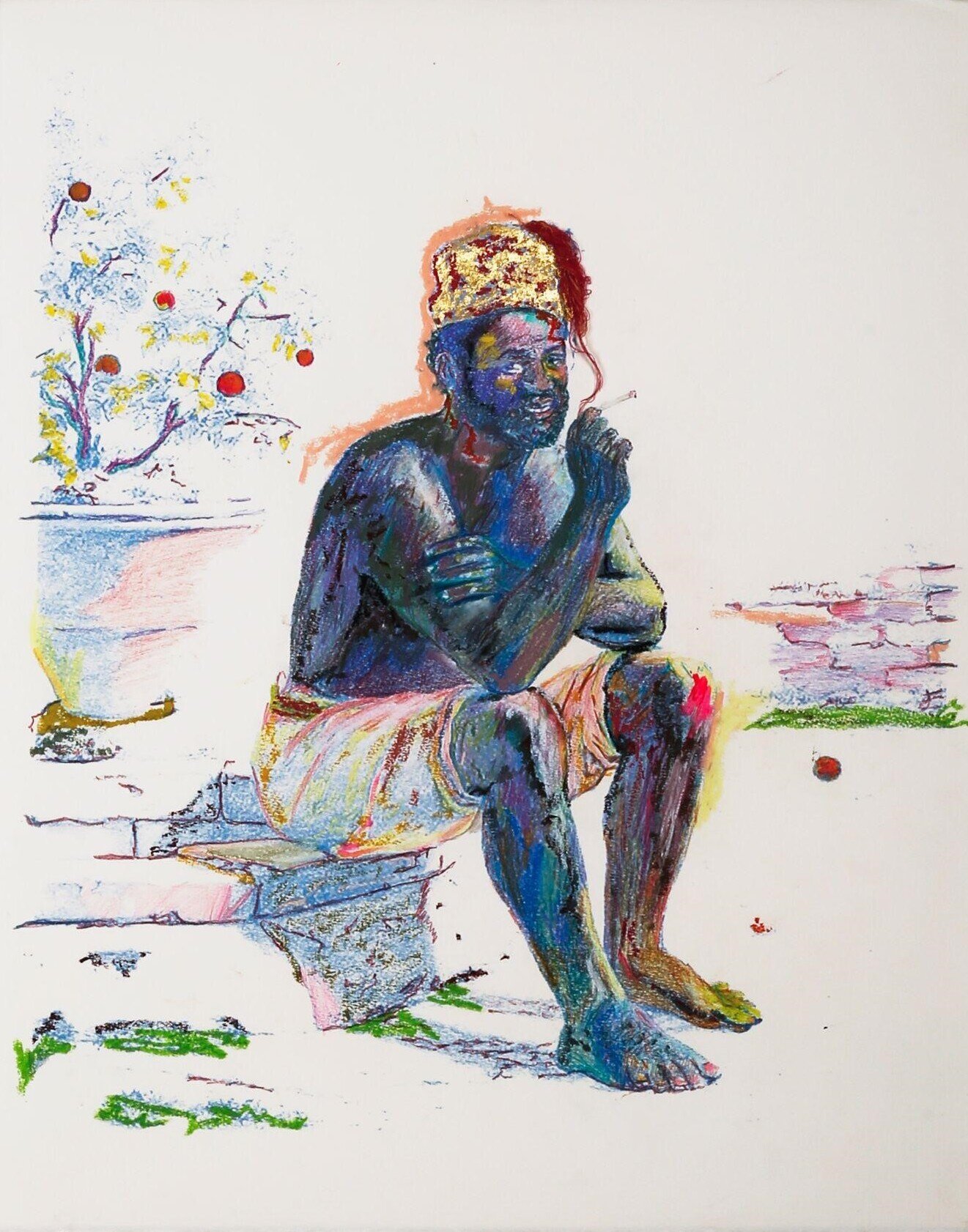
Berirouche Feddal, The criminal artist No. 3, 2021, Screen-print on 280gm paper, fibre, gold leaf and oil pastel, 25″ x 19″
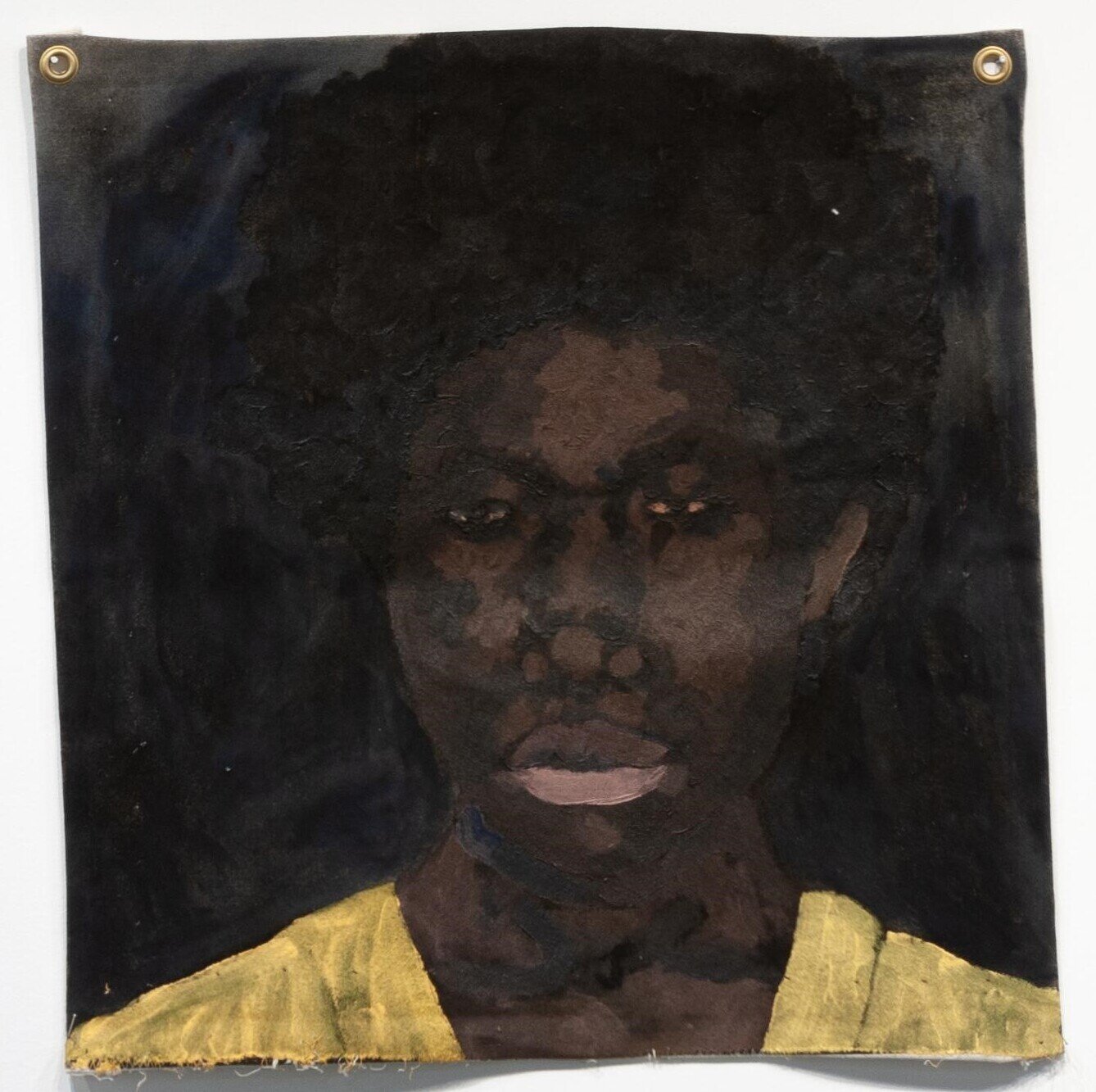
Preston Pavlis, Untitled 1, 2021, charcoal, acrylic, and oil on unstretched canvas, 21″ x 21.75”
Art school peers, Guillaume Saur and Matty Flader, examine the opposing forces of the internet: the extremely universal and extremely niche experiences it provides. Most viewers will recognize the background of Saur and Flader’s collaboration piece; the most generic of generic Windows desktop images, green fields under a cloudy blue sky. On top of this backdrop are four red and grey prints, created by feeding photography to an AI algorithm to combine the works of Saur and Flader. Selected for the AI were previously under-appreciated works from the archives of the artists. The result is a series of final images that are largely unrecognizable to us—a private conversation in which only Saur and Flader know the spoken languages.
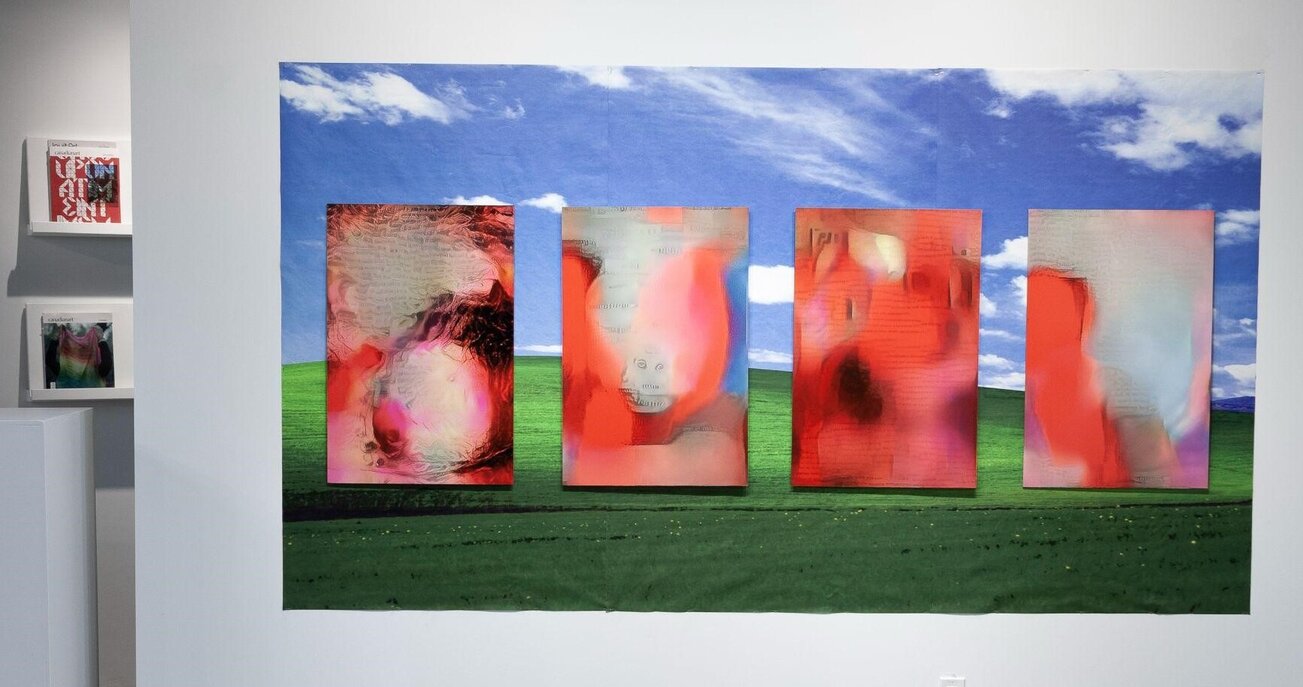
Installation view of Conversation at Mayten’s Projects, Guillaume Saur and Matty Flader, 2021
Talking Drums, by artists Christopher Dela Cruz and Eric Slyfield, stands apart conceptually from the other works as a “kinetic sound sculpture.” The drums are inspired by the cultural backgrounds of Dela Cruz and Slyfield, in both aesthetics and sound, modelled after the drums of their ancestors in the Philippines and West Africa. Talking Drums puts cross-cultural sharing into action quite literally. Just like how in life drums are used to communicate messages nonverbally and over distances, Talking Drums symbolizes art and its ability to communicate across physical and mental boundaries.
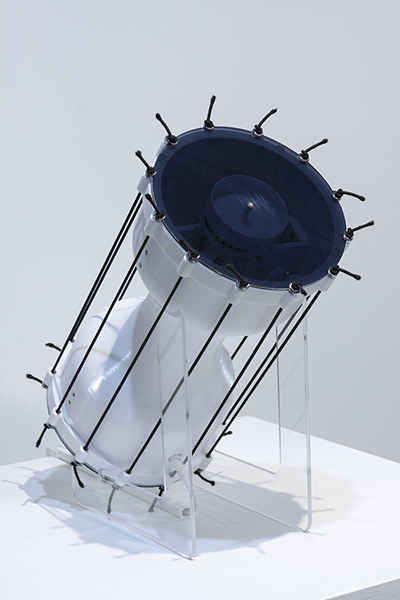
Christopher Dela Cruz and Eric Slyfield, Talking Drums, 2021, kinetic sculpture, 16″ x 8″ x 17″
Conversation, as a concept, is a surprisingly apt metaphor for a truly multicultural society—at least, surprising to me because I hadn’t considered it before. As a viewer, Conversation provided much fodder for examining my own cultural identity as a person of mixed heritage living in ‘multicultural Toronto.’ My beliefs, my culture, the food I eat, the languages I speak, the media I consume, all stem from an internal conversation between the parts of me. I’m not a mosaic or a melting pot, but a continuous exchange. Sometimes one voice is above the others but all parts are made stronger by the whole.
Conversation at Mayten’s introduces a world where constant and varied exchange is the norm and suggests that a multicultural society is made more successful by its cross-cultural connections. All this is punctuated by the method of delivery: a gallery exhibition. Art is a tool of conversation and of sharing in its ability to transcend barriers. Like the pounding rhythm of a drum, art can bridge the distances words cannot.
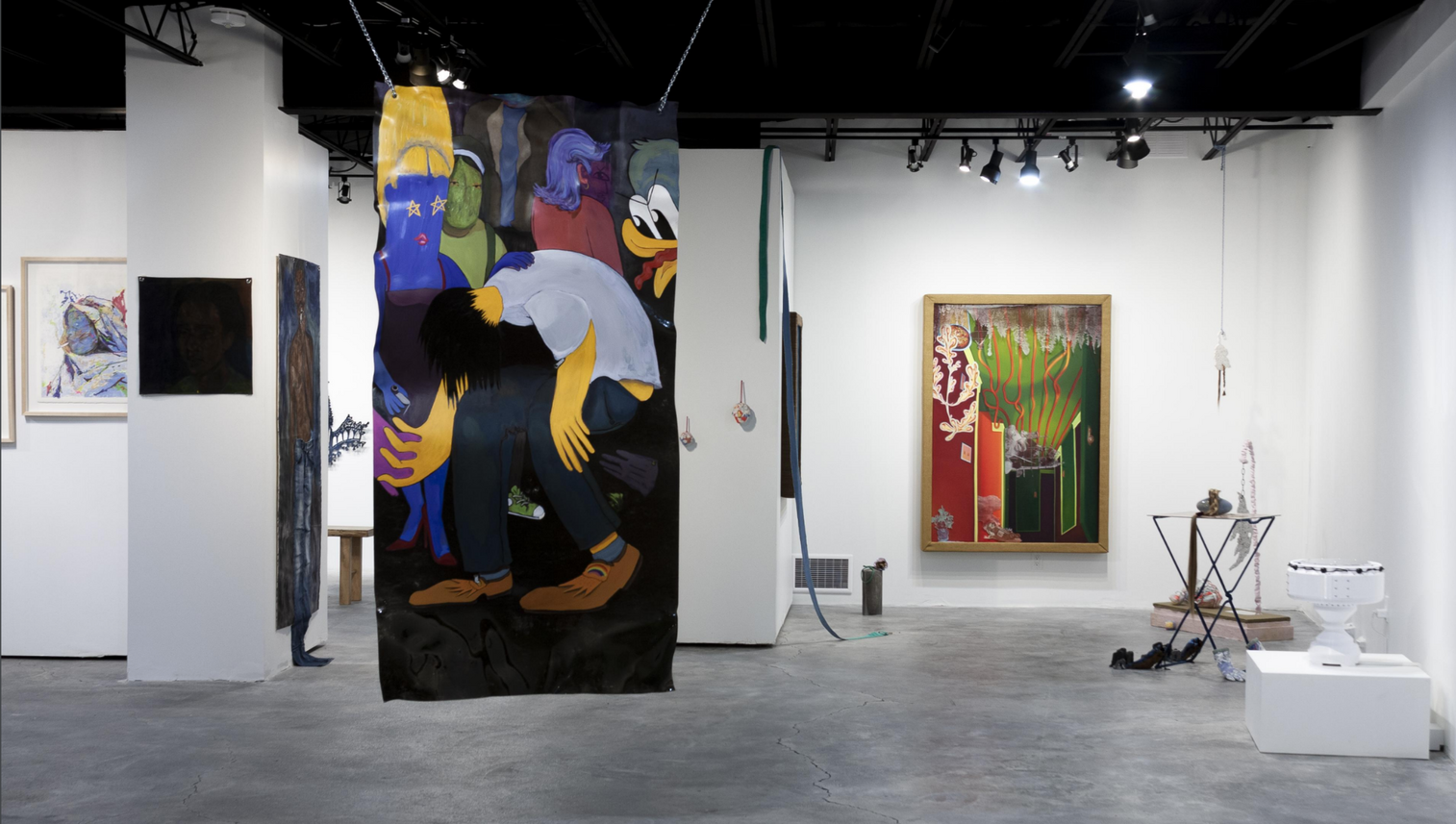
Installation view of Conversation at Mayten’s Projects, 2021
Olivia Mariko Hsuen-Ferris
Images are courtesy of Mayten’s Projects.

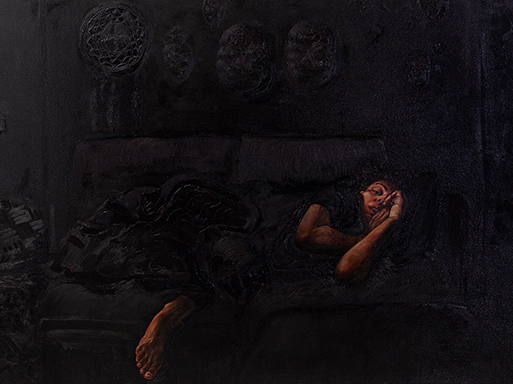

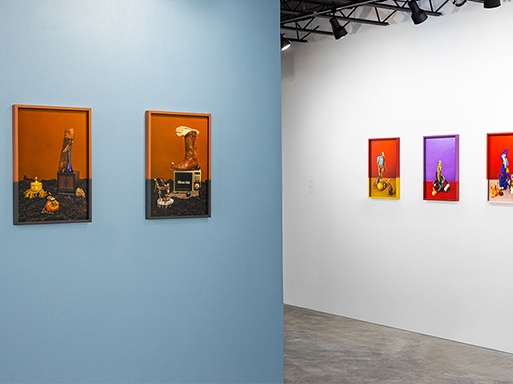






- 2473 views
12